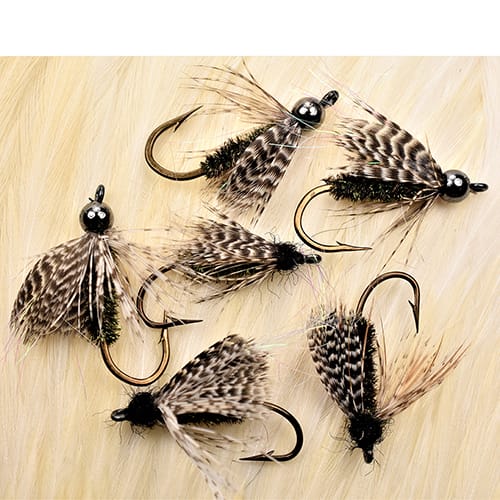fly fishing tips
In this blog I provide fly fishing tips for catching spring steelhead. In a previous blog, I described the spring steelhead that often show up in Central Valley anadromous rivers. Anglers often report catching these small steelhead that ranged from 12 to 20 inches in length although some anglers have reported catching steelhead as large as 6 pounds. A few local anglers refer to these late entering steelhead as “bluebacks,” late entering members of a winter steelhead run. The name is also used to describe several different species of trout and salmon. Other anglers call them “half-pounders” although the life history of Central Valley or Sacramento River steelhead is dissimilar to that of Klamath and Rogue river half-pounders. No matter the common name, they provide fly anglers who like to swing flies a nice transition from winter steelheading to summer shad fishing.
Swinging flies
A traditional wet fly presentation is analogous with swinging flies. Dave Hughes in his excellent book “Wet Flies: Tying and Fishing Soft-Hackles, Winged and Wingless Wets, and Fuzzy Nymphs, described the wet fly swing simply as “a cast quartering downstream across the stream and the fly allowed to swing across the run”. At the end of the cast the fly is allowed to dangle below the angler for a few moments. The angler will retrieve the line, take a step or two downstream, and repeat the cast.
Aquatic insects
During the spring months as water temperatures warm, more aquatic insects begin to make their appearance. Common among these are caddisflies, members of the scientific order Trichoptera. Many angling authors have written articles about caddis flies. Gary LaFontaine even devoted a complete book to the order simply titled “Caddisflies”. Common species found in Central Valley rivers includes members of the genus Brachycentrus, referred to as Mother’s Day caddis, American Grannon, or Little Black Caddis. This species often appears in March with emergence continuing through May.
Other species are found in the family Ryacophilidae, free-living larvae often called green rock worms. Finally, the net spinning Hydropsychidae are common in faster flowing rocky riffles. Another name for caddis flies is sedges. Most species emerge from their pupae cases and swim to the surface as an adult. The wet fly presentation is a great fishing technique to imitate the insect as it struggles and the current pushes it downstream.
The smaller two-handed rods are a great way to swing caddisfly imitations during the spring months. The technique will not only take steelhead, but also works well on the Sacramento River below Redding for resident rainbow trout. Two-handed rods from 10 ½ to 12 feet, more recently identified as “Trout Spey”, are great for swinging cadis fly pupae imitations. Similarly, the rods will handle a floating Scandinavian shooting head from 240 to 320 grains with or without a sinking leader.
Popular fly patterns to imitate caddisfly pupae when swinging included:
- wet flies,
- soft hackles,
- flymph patterns, and
- specific pupae imitations.
Presentation
Flies fished near the surface can be unweighted, or weighted to rise through the swing. Fortunately, presentation is likely more important than the actual pattern. Anglers should make casts across the run or riffle and slightly downstream. Subsequently, the swing can be slowed down with upstream mends or speeded up with a downstream mend as the line, leader and fly swings through the slower current on the near side. Anglers can even use an across stream “Greased Line” dead drift presentation. Dave Hughes describes in his wet fly book several specific presentation techniques. Thus, California anglers can experiment with fly fishing tips and a variety of swinging methods and techniques.
Check out the Assorted Fly Boxes for purchase!
Previous Blog: American River spring steelhead

Awesome
Great content! Super high-quality! Keep it up! 🙂